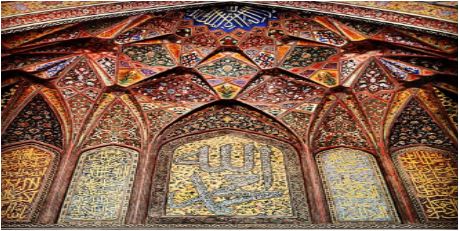Religious Tourism in Lahore: Case Study of Mosque Architecture under the Mughals
Abstract
 Abstract Views: 0
Abstract Views: 0
The city of Lahore is well known for both its magnificent architecture and rich cultural legacy. Lahore saw a dramatic transition under the Mughal rule with the building of several famous mosques that continue to draw religious travelers from all over the world. This case study examines the possibilities for religious tourism keeping in view the Mughal era mosques of Lahore, while emphasizing their spiritual appeal and architectural value. The architectural integrity and beauty of these mosques require ongoing preservation and restoration efforts. Religious tourism in Lahore can boost the local economy by creating jobs, generating business revenue, and promoting cultural exchange, thus fostering interfaith dialogue and showcasing the Mughal mosque architecture. On the other hand, sustainable tourism practices, such as waste reduction, water and energy conservation, and responsible tourism behavior can mitigate the negative environmental and community impacts of religious tourism. The study highlights how crucial it is to protect and promote these locations in order to respect the Mughal architectural heritage, maintain religious customs, and improve the city's standing as a center for religious tourism.
Downloads
References
Abbasova, Ş., & Abbasov, N. (2021). Importance of palace complexes, the pearls of medieval Islamic architecture, in urban planning and architecture. The Journal of Graduate School of Natural and Applied Sciences of Mehmet Akif Ersoy University, 12(2), 194–209. https://doi.org/10.29048/makufebed.870209
Arif, N. M., & Panakkal, A. (Eds.). (2023). South Asian Islam: A spectrum of integration and indigenization. Routledge.
Awan, M. Y., Gulzar, S., Mujahid, B., & Zafar, M. (2014). History of Mosque Architecture in Lahore. Journal of Islamic Thought and Civilization, 4(2), 21–36.
Baqir, M. (1984). Lahore past and present. The Punjabi Adabi Academy.
Bilal, M. A., & Parvez, A. (2017). Kashi-Kari at the Mosque Wazir Khan Lahore. Majallah e Tahqiq, 38(109), 3–14.
Blackwell, R. (2007). Motivations for religious tourism, pilgrimage, festivals and events. In R. Raj & N. D. Morpeth (Eds.), Religious tourism and pilgrimage festivals management: An International perspective (35–47). CABI.
Bora, S., & Bora, M. C. (2004) The story of Tourism. UBS Publishers Distributors.
Bulatović, I., & Stranjančević, A. (2019). Integrated model of religious tourism in underdeveloped destinations. Journal of the Geographical Institute “Jovan Cvijić” SASA, 69(1), 53–66.
Chishti, N. A. (1870). Tehqiqat-i-Chishti-Tarikh E Lahore ka encyclopedia. Koh e Noor.
Gupta, S. P., Lal, K., & Bhattacharyya, M. (2002) Cultural tourism in India. D.K. Printworld Pvt. Ltd.
Hussain, S., & Juan, F. (2023). Exploring the architecture and its influence of Badshahi Mosque Lahore (BMLH): A UNESCO tentative heritage site. Journal of Islamic Architecture, 7(3), 464–475. https://doi.org/10.18860/jia.v7i3.20999
Khan, A. N. (1991). Development of mosque architecture in Pakistan. Lok Virsa Pub. House.
Latif, S. M. (1892). Lahore: Its history, architectural remains and antiquities: With an account of its modern institutions, inhabitants, their trade, customs, &c. The New Imperial Press.
Leonard, J. B. (1986). Lahore. Cities, 3(1), 12–23. https://doi.org/10.1016/0264-2751(86)90003-X
Mughal, M. R. (2011). Heritage preservation in Pakistan. In Z. Mehmood (Ed.), State vandalism of history in Pakistan. Vanguard Books.
Sheikh, S. Z. (2018). Moti Masjid: Pearl of Lahore fort complex, Lahore. International Journal of Multidisciplinary and Current Research, 6, 141–151.
Theobald, W. F. (2005). The meaning, scope, and measurement of travel and tourism. In W. F. Theobald (Ed.), Global tourism (pp. 23–48). Routledge.
Walli Ullah, K. M. (1964). Lahore and its important monuments. International Packing Co.
Wheeler, R. E. M. (1950). Five thousand years of Pakistan. C. Johnston.

Copyright (c) 2023 Saira Ramzan

This work is licensed under a Creative Commons Attribution 4.0 International License.
JAABE follows an open-access publishing policy and full text of all published articles is available free, immediately upon publication of an issue. The journal’s contents are published and distributed under the terms of the Creative Commons Attribution 4.0 International (CC-BY 4.0) license. Thus, the work submitted to the journal implies that it is original, unpublished work of the authors (neither published previously nor accepted/under consideration for publication elsewhere). On acceptance of a manuscript for publication, a corresponding author on the behalf of all co-authors of the manuscript will sign and submit a completed Copyright and Author Consent Form.
Copyright (c) The Authors





